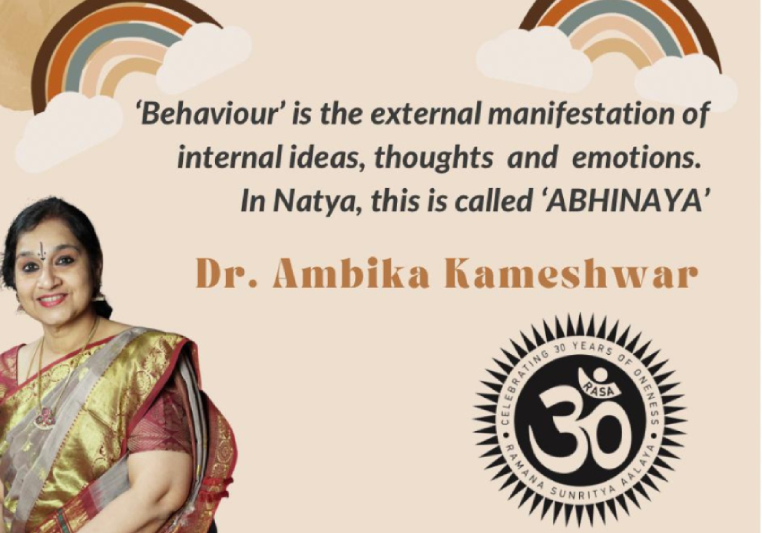Life is Theater, Theater is Life – 2
In my previous blog post, I wrote about life as theater. We can think of even simple scenarios such as ironing and shopping at a neighborhood store as theater. In a theatre performance, each person has a role. In my previous blog post, I described my role in each scenario. In this post, I will do a scene analysis and also talk about the four forms of abhinaya.
Every actor in a performance uses four forms of abhinaya to communicate their thoughts, ideas, and feelings: 1) Angika abhinaya (Body language), 2) Vachika Abhinaya (Speech), 3) Aharya Abhinaya (Attire and Props), and 4) Satvika Abhinaya (emotional expression).
Scene Analysis: At airport security
1. Scene choreography
My mother and I are in the airport. First, we show the id to the security before we get into the airport. Once we get into the airport, we go to the airline counter to check in the suitcases and get the boarding cards.
Setting:
Security line:
Conveyer belts, luggage, queues for men and women, trays for putting baggage trays, scanner
2 Characters and role definitions
a) My role:
I help my mother take the laptop, IPAD, phones, and chargers and place them in the tray. Then, I go through the men’s security line, and my mom goes through the woman’s security line. After the security check is over, I help my mother pick up all the electronic items and put them in the bags. Then, we go to the lounge and gate.
b) The others in the scene:
My mother
Other passengers
Airport security staff
3. Audio /script:
Script for requesting boarding cards and checking bags at the ticketing counter. Script for sending carry on bags and interacting with airport security.
4. Focus of the scene – Rasanubhava (Enjoying travel), Somewhat excited because of my interest in travel.
Abhinaya at Airports
- Angika (Body Language)
When we are in airports, we must be aware of posture and body language. When I pass through security, I have to watch people ahead of me and figure out when it is my turn. - Vacika (Speech)
We did not talk much at the airport. In the security line, we have to observe and adjust the body movements. But we briefly have to speak to the security and answer any questions. - Aharya (Attire and Props)
Attire is also an important part of communication. When we travel on planes, I choose appropriate attire. For example, shirts and pants are more formal than T-shirts and track pants.
There are many props in a security line. For example, we have to take baggage trays, put it on a conveyer belt, and push it towards the scanner.
- Satvika (Emotional expression)
Looking calm and confident is important at airports and other public spaces.
In my Theater Arts for Holistic Development (TAHD) classes, I practice all the four forms of Abhinaya. For example, I learn a lot about posture, body movements, and body language in my dance class. In my storytelling class, I learn how to speak and modulate my voice appropriately. When I perform, I pay a lot of attention to attire and props also. Emotional expression is part of all my TAHD classes.
Parent note
Parents of neurodivergent children are often concerned about speech. The four forms of abhinaya in Indian natya are a better way to think about communication. An airport scenario is a good example to think about the various components of abhinaya. Vacika(speech) did not have to be used extensively. Angika (tracking people, knowing when to stop and when to go, handling security check) is much more significant. Satvika (expression) important too. TAHD creates opportunities to learn and practice all four forms of abhinaya that we need in every role that we play.x

One Response
Very intersting and thought provoking.Communication can be through body gesture sign any form but as parent we only focuses on one form of communication that is speech